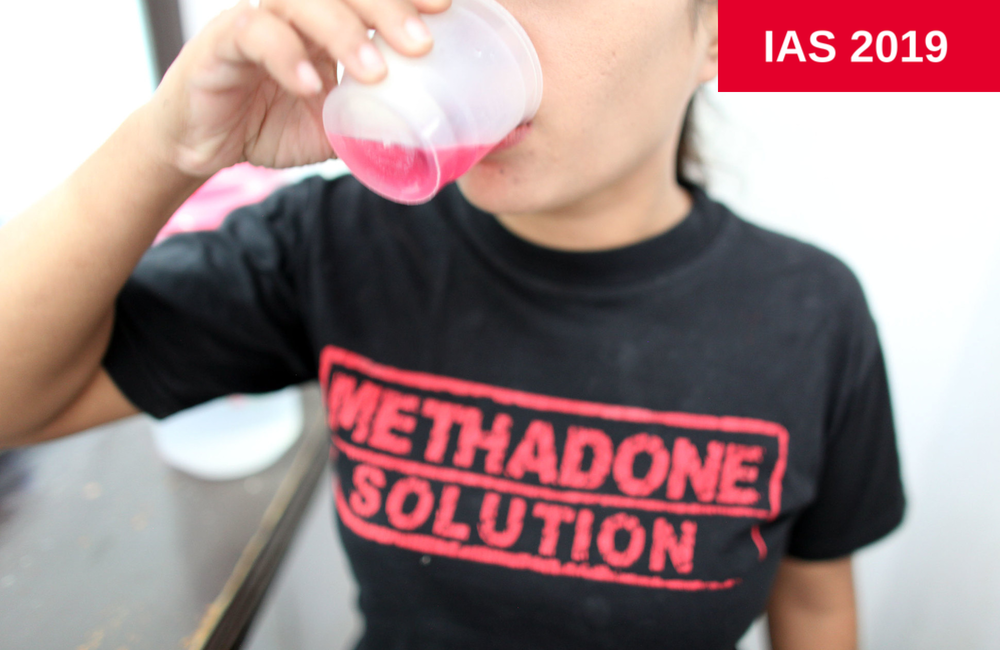
Medication-assisted treatment to help manage drug addiction increased the likelihood that women living with HIV who use drugs would maintain an undetectable viral load, according to a Canadian study presented at the recent International AIDS Society Conference on HIV Science (IAS 2019) in Mexico City.
Medication-assisted treatment (MAT) using opioid agonists such as methadone or buprenorphine is a proven method for helping people reduce or stop using heroin and other opioids.
Joella Adams of Brown University in Rhode Island and colleagues at the University of British Columbia in Vancouver evaluated the effect of demographic, behavioural and clinical factors on the chances of HIV rebound after achieving viral suppression among a cohort of women who use illicit drugs.
Women living with HIV are less likely than men to achieve optimal adherence to antiretroviral therapy (ART) and to maintain an undetectable viral load, Adams noted as background. Factors associated with viral rebound in prior studies include depression and other mental health problems, intimate partner violence and stigma related to sex work.
This analysis included 185 HIV-positive women who use drugs who participated in the ACCESS prospective cohort study in Vancouver between 2005 and 2017. All had started antiretroviral treatment and achieved viral suppression (HIV RNA below 50 copies/ml). Nearly half (46%) were indigenous, 25% identified as a 'sexual minority' and 5% were transgender. Participants were interviewed and received viral load and CD4 cell tests approximately every six months, with follow-up for up to 11 years.
Antiretroviral therapy is provided free to all people with HIV in Vancouver.
Just over a third (34%) of the women experienced viral rebound, defined as HIV RNA above 1000 copies/ml, at least once during the 11 years of follow-up. Of these, two-thirds had one episode of viral rebound, a quarter had two such events and 8% had three or more episodes.
The researchers found that women who consistently received medication-assisted treatment for drug use took longer to experience viral rebound and were more likely to maintain consistent viral suppression than those who never received MAT.
In both groups, the proportion who experienced viral rebound increased steadily during the first three years and then reached a plateau. Among those followed for eight years or more, about 65% of women who used medication-assisted treatment maintained viral suppression, compared with about 55% of those who did not receive MAT.
After adjusting for a wide variety of factors including race/ethnicity, sexual orientation, education level, employment, homelessness, incarceration, sex work, injection drug use, overdose, heavy alcohol use, sexual abuse, violence, and baseline viral load and CD4 count, the only factor found to be protective against viral rebound was receiving medication-assisted addiction treatment during the past six months. Women who received MAT were about half as likely to experience viral rebound as those who did not (hazard ratio 0.47).
Adjusting for antiretroviral adherence attenuated the effect of medication-assisted treatment, suggesting that MAT may have reduced the risk of viral rebound by increasing adherence.
"This study provides additional evidence that MAT can improve HIV treatment outcomes among women," the researchers concluded. "Efforts to improve access to and retention within MAT programs may improve rates of viral suppression for HIV-infected women who use illicit drugs."
They recommended that medication-assisted addiction treatment be co-located with HIV treatment services, that MAT services have a low barrier to entry, and that services include ART adherence counselling and support.
Adams J et al. Receipt of medication-assisted treatment halves the risk of HIV-1 RNA viral load rebound for HIV-positive women who use illicit drugs. International AIDS Society Conference on HIV Science, Mexico City, abstract TUPDD0105, 2019
Read the abstract on the conference website.
Full image credit: Josh Estey/DFAT. Image available at www.flickr.com/photos/dfataustralianaid/10701445183 under a Creative Commons licence CC BY 2.0.
